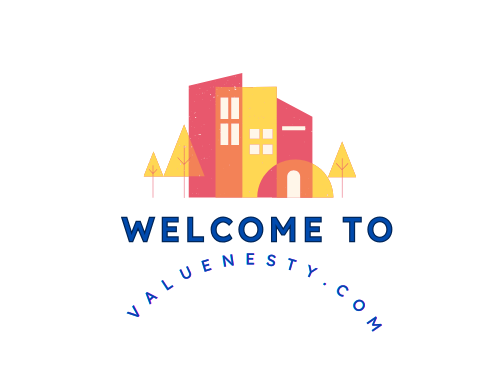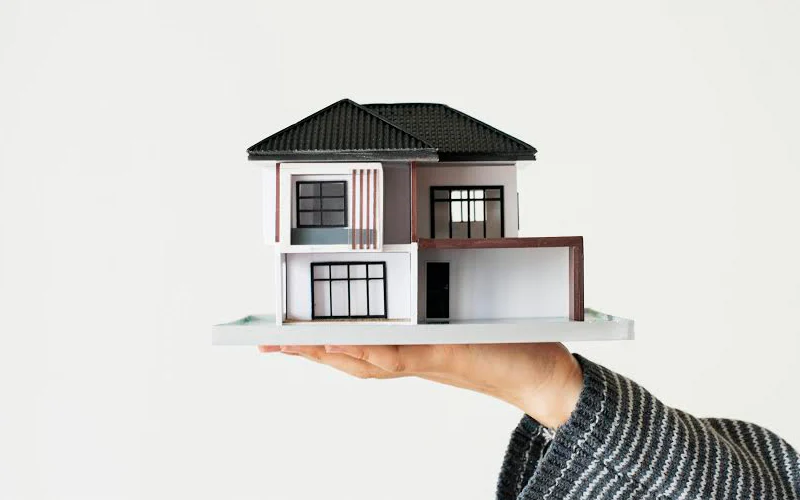introduction:
Buying your first residence is an exhilarating yet challenging journey.The thrill of owning a place you can call your own comes with a myriad of steps that can be overwhelming. To make this process smoother, having a comprehensive Home Buying Process Checklist is essential. This checklist will guide you through each phase of the home-buying journey, ensuring you don’t miss any crucial steps along the way.
1:Understanding the Home Buying Process:
Before diving into the checklist, it’s important to understand the stages of the home buying process. This journey typically consists of several key phases, including preparation, house hunting, making an offer, closing, and finally, moving in. Each phase has its own set of tasks and considerations that can affect your overall experience.
1. Preparation Phase
The preparation phase is where your journey begins.It establishes the groundwork for everything that comes next.Here’s what you need to do:
Assess Your Financial Situation
- Budgeting: Determine how much you can afford. Consider not just the purchase price but also other costs like property taxes, insurance, and maintenance.
- Credit Score: Check your credit score. A higher score can result in more favorable mortgage rates.
- Debt-to-Income Ratio: Lenders will look at your debt-to-income ratio to assess your ability to pay back a loan.
Get Pre-Approved for a Mortgage
Getting pre-approved for a mortgage gives you a clear idea of how much you can borrow, which can make your house-hunting process more efficient.It also demonstrates to sellers that you’re a committed buyer.Gather your financial documents, such as pay stubs, tax returns, and bank statements, to present to your lender.
Determine Your Needs and Wants
Make a list of what you need in a home versus what you would like. Consider factors such as:
- Number of bedrooms and bathrooms
- Proximity to work, schools, and amenities
- Neighborhood characteristics
- Future resale value
2. House Hunting Phase:
Once you’re financially ready, it’s time to begin searching for your ideal home.
Create a Home Buying Process Checklist for House Hunting
- Research Neighborhoods: Investigate various neighborhoods to find the best fit for you. Consider safety, schools, and community amenities.
- Utilize Online Resources: Websites like Zillow, Realtor.com, and local listings can help you narrow down your options.
- Hire a Real Estate Agent: A knowledgeable agent can provide invaluable insights and assist you in navigating the local market.
Attend Open Houses and Showings
Visiting open houses and private showings allows you to get a feel for the properties. Take notes and pictures to help you remember each place. Use your checklist to evaluate each home based on your criteria.
3. Making an Offer:
When you discover a home that fulfills your requirements, it’s time to submit an offer.
Research Market Value
Before making an offer, research the home’s market value.Examine similar homes in the area to establish a reasonable price.Your real estate agent can provide insights into recent sales and market trends.
Draft an Offer Letter
Your offer letter should include:
- Purchase price
- Contingencies (e.g., home inspection, financing)
- Closing date
- Earnest money deposit
Be prepared for negotiations. Sellers may counter your offer, so having a clear idea of your limits is crucial.
4. Closing the Deal:
Once your offer is approved, the closing process commences.This phase can be complex, so having a Home Buying Process Checklist is beneficial.
Schedule a Home Inspection
A professional home inspection is crucial for identifying any possible issues with the property. Be present during the inspection to ask questions and gain a clearer understanding of the home’s condition.
Secure Financing
Finalize your mortgage application with your lender. Provide any additional documentation they may require, and ensure you understand the terms of your loan.
Title Search and Insurance
A title search guarantees that there are no legal complications or claims against the property. Acquiring title insurance safeguards you against potential future claims.
Review Closing Documents
Before closing, review all documents carefully. This includes the Closing Disclosure, which outlines your loan terms and all costs associated with the purchase.
5. The Closing Day:
On closing day, you’ll finalize the purchase. Here’s what to expect:
- Sign Documents: Be prepared to sign a lot of paperwork, including the mortgage and deed.
- Pay Closing Costs: These typically range from 2% to 5% of the home’s purchase price and include fees for the loan, title insurance, and other services.
- Receive the Keys: Once all documents are signed and payments are made, you’ll receive the keys to your new home!
6. Moving In:
Congratulations! You’re now a homeowner. But the journey doesn’t end here. You still have some important steps to consider:
Set Up Utilities
Contact local utility companies to set up water, electricity, gas, and internet services.
Change Your Address
Update your address with the post office, financial institutions, and any other essential organizations.
Plan Your Move
Create a moving plan, including packing, hiring movers, and setting up your new space. Make a checklist of tasks to ensure nothing is overlooked.
conclusion:
The home buying process can feel overwhelming, especially for first-time buyers. However, having a detailed Home Buying Process Checklist can help simplify the journey and keep you organized.Recall to take your time, conduct your research, and seek guidance when necessary.Owning a home is a significant milestone, and with the right preparation and knowledge, you can make this dream a reality.
By following this comprehensive checklist, you’ll be well-equipped to navigate the complexities of buying your first home, ensuring that you find the perfect place to begin your next chapter. Happy house hunting!
faqs:
1. What is a Home Buying Process Checklist?
A Home Buying Process Checklist is a structured guide that outlines all the necessary steps and tasks involved in purchasing a home. It typically includes phases such as financial preparation, house hunting, making an offer, closing, and moving in. This checklist helps first-time buyers stay organized and ensures they don’t overlook any critical steps throughout the process.
2. Why is obtaining pre-approval for a mortgage significant?
Getting pre-approved for a mortgage is crucial because it gives you a clear understanding of how much you can afford to borrow. It also signals to sellers that you are a serious buyer, which can strengthen your negotiating position. Pre-approval involves a lender reviewing your financial information, credit score, and debt-to-income ratio, allowing you to make informed decisions during your home search.
3. What should I search for when searching for a home?
When house hunting, consider factors like:
- Location: Evaluate the neighborhood for safety, schools, and proximity to work and amenities.
- Home Condition: Pay attention to the home’s structure, roof, plumbing, and electrical systems.
- Size and Layout: Ensure the home meets your needs in terms of space and functionality.
- Future Resale Value: Consider whether the home is in a growing area, which may influence its future value.
Using a checklist can help you systematically evaluate each property.
4. What are contingencies, and why are they important?
Contingencies are stipulations that must be fulfilled for the sale to move forward.Common contingencies include:
- Home Inspection: Allows you to back out if significant issues are discovered.
- Financing: Ensures you can secure a mortgage.
- Appraisal: Protects you from overpaying if the home doesn’t appraise for the purchase price.
Including contingencies in your offer helps protect your interests and minimizes potential risks.
5. What happens during a home inspection?
A home inspection is a thorough evaluation of a property conducted by a professional inspector. It typically covers:
- Structural integrity
- Roof and attic conditions
- Plumbing and electrical systems
- HVAC systems
- Pests and mold
The inspector will provide a detailed report outlining any issues, allowing you to make informed decisions regarding repairs or price negotiations.
6. What are closing expenses, and how much should I anticipate paying?
Closing costs are charges related to completing the acquisition of a home.They typically range from 2% to 5% of the home’s purchase price and can include:
- Loan origination fees
- Title insurance
- Appraisal fees
- Home inspection costs
- Property taxes
It’s essential to plan for these expenses in addition to your down payment.
7. What should I do on closing day?
On closing day, you’ll meet with the seller, real estate agents, and possibly a closing agent or attorney. Key tasks include:
- Signing Documents: Review and sign the mortgage agreement, deed, and other required documents.
- Paying Closing Costs: Be prepared to pay the closing costs, which may require a cashier’s check or wire transfer.
- Receiving Keys: After all paperwork is signed and payments are made, you’ll receive the keys to your new home.
8. How do I choose the right neighborhood?
Choosing the right neighborhood involves considering factors such as:
- Safety: Research crime rates and community safety.
- School Quality: Look into local schools and their ratings, especially if you have children or plan to in the future.
- Amenities: Check for nearby parks, shopping centers, and transportation options.
- Future Development: Investigate any planned developments that might enhance or detract from the neighborhood.
Visiting neighborhoods at different times can also give you a better feel for the area.
9. What should I do if I find issues during the home inspection?
If the home inspection reveals significant issues, you have a few options:
- Request Repairs: Ask the seller to address the issues before closing.
- Bargain for Price: Utilize the discoveries to negotiate a reduced purchase price.
- Walk Away: If the issues are too severe and you included an inspection contingency, you can back out of the sale without penalty.
Having a good understanding of your options will help you make informed decisions.
10. How can I prepare for moving into my new home?
Preparing for your move involves several steps:
- Create a Moving Timeline: Plan when to start packing, hire movers, and set up utilities.
- Update Your Address: Inform the post office, banks, and other essential organizations of your new address.
- Set Up Utilities: Contact local providers to establish water, electricity, internet, and other services in advance.
- Pack Strategically: Begin packing well ahead of the move, labeling boxes for easier unpacking.
Preparing in advance will help guarantee a seamless move into your new home.

